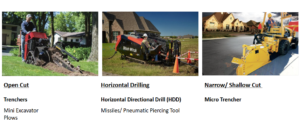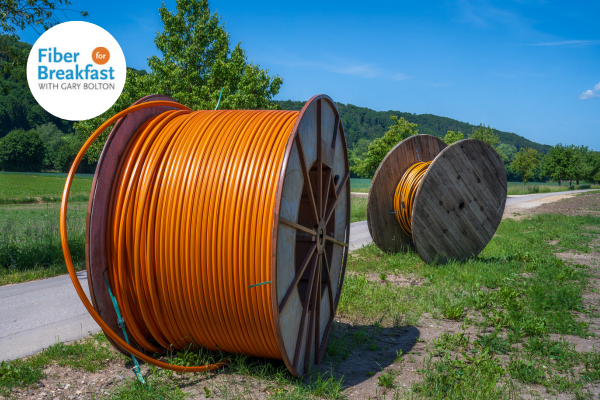FFB Week 28: The Critical Role of Underground Construction in the Rush to Install Fiber
The Critical Role of Underground Construction in the Rush to Install Fiber
For the past several years, fiber installation has continued to push forward to new levels of demand. Horizontal directional drilling (HDD), the construction medium made for fiber installation, has desperately been trying to keep up with booming project appetites across America. While micro-trenching and other construction methods are also being employed as part of the fiber construction tsunami, HDD, due to its environmentally friendly qualities combined with speedy construction process, remains the preferred installation method.
In a wide-ranging conversation featuring industry veterans Mike Render of RVA LLC, a long-time research partner of FBA and Robert Carpenter, editor-in-chief of Underground Infrastructure magazine, discussed the vital and growing role of underground construction in broadband deployment.
Underground Construction: The Backbone of Fiber Rollouts
Render, a leading researcher in broadband deployment and a recognized figure within the fiber community, shared insights from recent consumer and provider surveys: “About 60% of fiber construction is underground.” That percentage has steadily increased over the last couple of decades and varies depending on terrain, permitting, and regional infrastructure density.
He added, “The challenge is matching the explosive growth in fiber deployment with available labor and technology. We are seeing a surge in route miles, especially as we push fiber deeper into rural America. That is where underground strategies really shine.”
The need to bury fiber is driven by more than just coverage. Weather resilience, long-term cost savings, and reliability are all factors favoring underground installations over aerial lines. Fiber has become an essential utility.
HDD: A ‘Disruptive Technology’
Carpenter, a 33-year veteran of infrastructure journalism and founder of the Underground Infrastructure Conference, described horizontal directional drilling (HDD) as “one of the most important and disruptive technologies to hit the underground sector.”
“When I started attending contractor events 25 years ago,” Carpenter recalled, “most contractors were doing overhead/ariel installs with 70% overhead, and 30% underground. Today, that is flipped—about 60 to 65% are doing underground. The nature of the beast is simply speed and economics.”
HDD, he explained, allows crews to steer around obstacles like roads, rivers, and other buried utilities without open trenching. “It’s the preferred method now with large and small
providers,” said Carpenter. “It’s fast, flexible, and efficient, especially for dense urban environments where open cuts just aren’t viable.”
Carpenter noted that HDD is not only key for fiber, but also widely used for gas, power, and water lines. It can enable providers to install everything from tiny fiber lines to massive 48-inch steel pipelines under a river without disrupting the surface.
Fiber and HDD: Parallel Booms
RVA’s Render and Carpenter both highlighted that the rise in HDD use directly mirrors the increase in fiber demand. It may be a project of 50 or even 500 miles, it may be just a neighborhood, and the contractor needs someone there as soon as possible to make their financial plans work. Carpenter explained, “The number of newer rigs on the market is up significantly. For one thing, they are wearing those old ones out, and so they must replace them.”
Innovation in Installation Methods
Beyond HDD, other underground construction techniques are also gaining traction. Narrow-cut and shallow trenching methods are emerging for certain applications. A technique that allows a 12-inch trench to be made, fiber is laid down and the trench is refilled. This is fast and efficient but does have downsides according to our guests.
Our guests stressed the importance of planning and safety in all underground projects, citing increasing insurance claims due to utility strikes. Most sewer and water lines are exempt from 811 locating laws, so the burden falls on the contractor to pothole and verify the path. These are important steps before cutting into the surface — because hitting a gas line would be catastrophic.
Looking Ahead
As broadband continues to expand into every corner of the country, experts agree that underground infrastructure will remain critical. Adding to the already red-hot fiber installation market is the pending BEAD funding program for rural and underserved areas. When BEAD does start to be released along with additional public and private investments, the HDD market is bracing for another era of accelerated workload demands.
Click here to listen to the full episode or find previous episodes of Fiber for Breakfast.
Click here to download the slides used in this episode.




